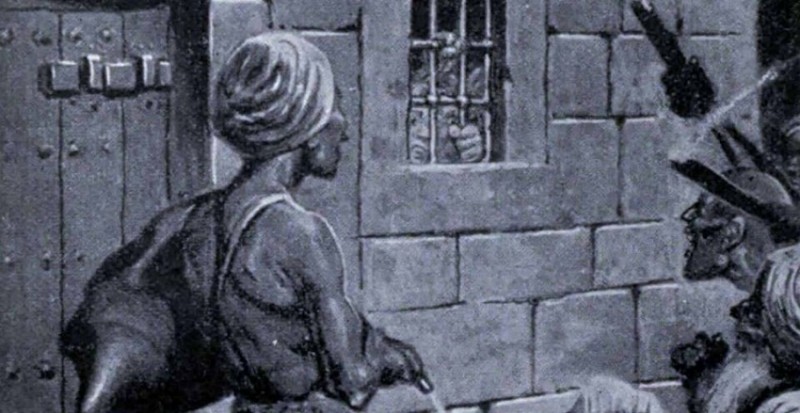
On June 20, 1756, an event occurred in the history of British India that would come to be known as the "Black Hole of Calcutta." This incident remains a poignant reminder of the tumultuous period of colonial expansion and the conflicts that arose between local rulers and the British East India Company.
Background
The mid-18th century was a time of intense rivalry for control over trade and territory in India. The British East India Company, having established a foothold in the region, was expanding its influence in Bengal, a wealthy and strategically important province. This expansion was met with resistance from Siraj-ud-Daulah, the newly appointed Nawab of Bengal. Siraj-ud-Daulah viewed the fortifications at Fort William in Calcutta as a direct threat to his authority and sovereignty.
The Siege of Fort William
Tensions escalated when Siraj-ud-Daulah demanded the demolition of British fortifications in Calcutta. The British refused, leading the Nawab to march on the city. On June 20, 1756, after a brief siege, Siraj-ud-Daulah’s forces successfully captured Fort William. In the chaotic aftermath, British officers and civilians, along with some Dutch and Portuguese individuals, were taken prisoner.
The Black Hole Incident
The prisoners were confined in a small dungeon measuring about 18 by 14 feet, with only two small windows for ventilation. This dungeon, originally meant for petty criminals, became a death trap when approximately 146 people were crammed into it. The sweltering summer heat and lack of ventilation soon took their toll. Over the course of the night, many prisoners succumbed to suffocation and heat exhaustion.
According to John Zephaniah Holwell, one of the survivors who later documented the incident, only about 23 people emerged alive the next morning. The exact numbers remain a topic of debate among historians, but Holwell's account, though considered exaggerated by some, has been the most influential in shaping the narrative of the event.
Aftermath and Legacy
The "Black Hole of Calcutta" had far-reaching consequences. News of the atrocity outraged the British public and officials. This incident became a catalyst for the British East India Company to launch a military response. Under the command of Robert Clive, the British forces recaptured Calcutta in January 1757. This was followed by the decisive Battle of Plassey in June 1757, which resulted in the defeat of Siraj-ud-Daulah and marked the beginning of British dominance in Bengal.
Historical Controversy
The Black Hole incident has been the subject of much historical scrutiny. Some modern historians question the accuracy of Holwell’s account, suggesting that the number of prisoners and the death toll may have been exaggerated to justify British retaliation. Nonetheless, the incident remains a symbol of the brutalities of colonial conflict and the human cost of imperial ambitions.
Commemoration
In memory of the victims, a monument known as the Black Hole Memorial was erected in Calcutta (now Kolkata) by Holwell in 1760. Although the original monument no longer exists, a plaque commemorating the event was later installed at St. John’s Church in Kolkata.
The Black Hole of Calcutta is a grim chapter in the history of British India, highlighting the extreme conditions and intense hostilities that characterized the period. As we reflect on this event from June 20, 1756, it serves as a reminder of the complexities and tragedies that often accompany the course of history.
Goa Revolution Day: Celebrating Freedom and Valor
National Random Acts of Light Day: Spreading Kindness and Hope, When It is?